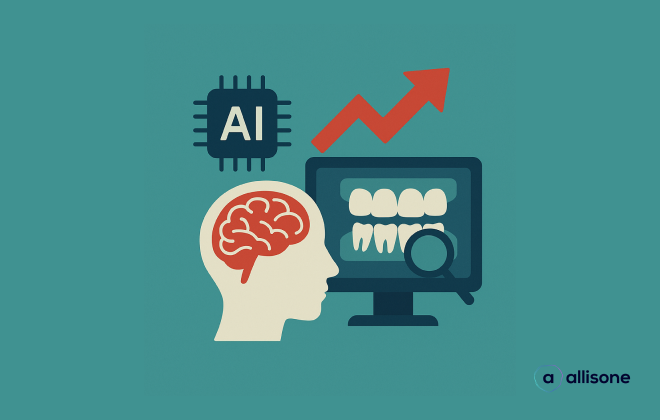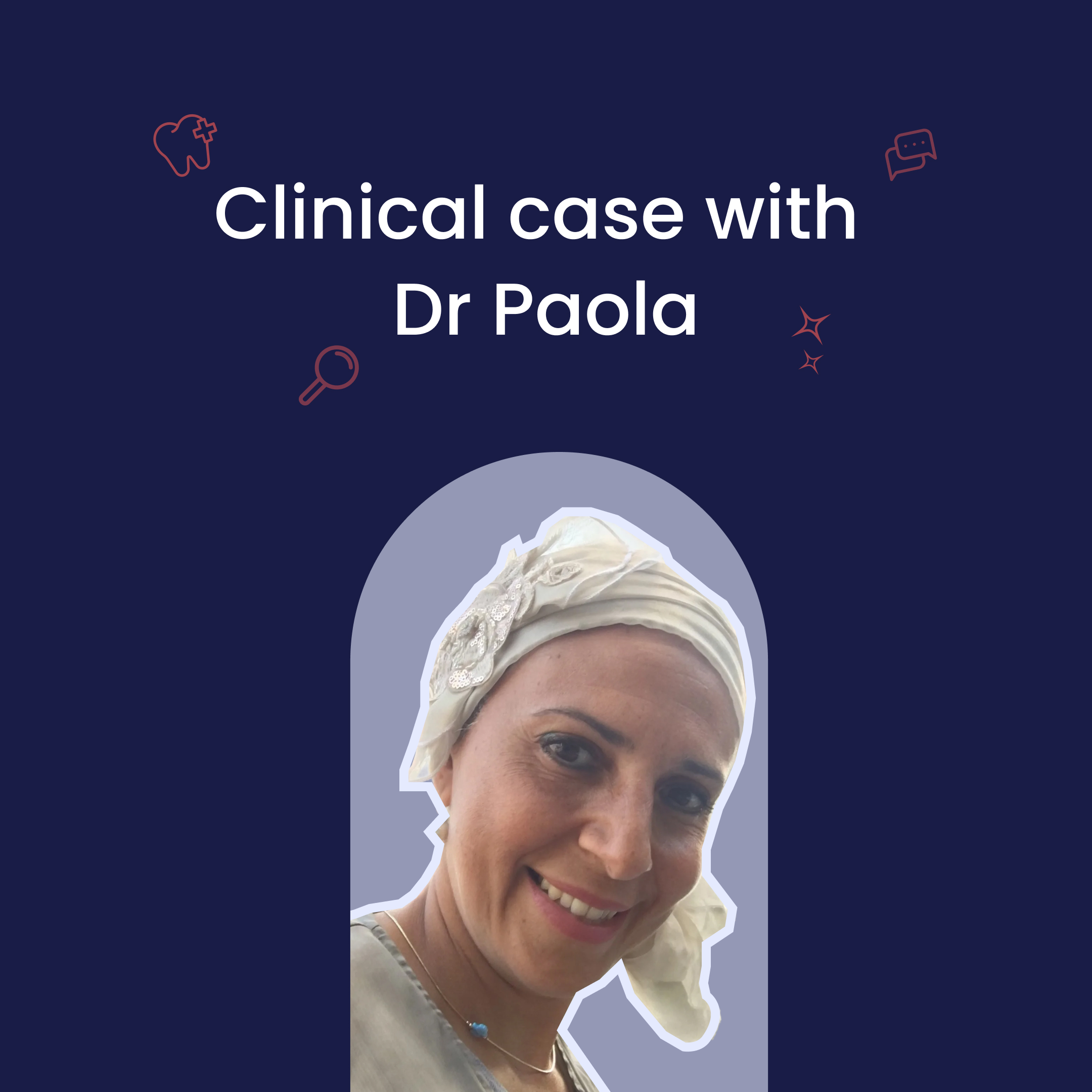How can you use artificial intelligence to optimize the profitability of your dental practice?

Running a dental practice requires not only clinical expertise, but also managerial skills, which are often overlooked in initial training. Ensuring profitability while maintaining a high standard of care is a constant challenge for dental surgeons. Between fixed costs, staff management and patient care, every aspect of management must be mastered to avoid overwork and financial worries. By combining a precise approach to financial indicators with the use of facilitating tools such asAllisone.ai, you can transform your dental practice into a profitable business while offering superior care.
Master your practice's key financial indicators
Knowing and controlling your breakeven point
The breakeven point is the amount at which your business becomes truly profitable. Knowing this threshold is essential for assessing the financial viability of your practice. To calculate it, you need to add up your fixed costs, such as rent, salaries and loan repayments, and your variable costs, such as electricity and insurance.
Once you've identified these costs, you'll know how much revenue you need to generate to cover your expenses. This calculation is crucial to anticipate the times when your practice could find itself in financial difficulty, for example during vacation closures or periods of low activity. Having this data allows you to adjust your pricing strategies and optimize your work periods.
Monitor quotation conversion rates closely
Another key indicator of your practice's financial health is the quote conversion rate. In other words, the percentage of patients who accept the treatment plans you propose. In France, around 65% of patients do not accept the treatments recommended by their dentists, often due to a lack of understanding of the clinical issues involved.
Tools like Allisone.ai can play a key role in improving this rate. By providing clear, visual explanations of dental X-rays, our software enables patients to better understand their oral health status and perceive the importance of treatment, even in the absence of pain. By increasing transparency, you also increase patient confidence, which translates into better acceptance of quotes and greater financial stability for your practice.
Calculate and adjust your hourly rate
The hourly rate is essential for assessing the profitability of your services. There are several ways to calculate it: by dividing your sales by the number of hours worked, or by taking into account fixed and variable charges to obtain a net hourly rate. This calculation enables you to measure the value of your work and adjust your rates accordingly, so as not to undervalue your services.
It's also worth calculating the hourly rate per procedure. Some dental procedures, particularly the more complex ones, require a great deal of time without being well remunerated, such as endodontics. Knowing your hourly rate per procedure will enable you to optimize your schedule and ensure fair remuneration for your work, while avoiding financial losses due to under-invoicing.
Boost patient adherence and improve profitability with AI
Improving understanding of care through visualization
One of the major challenges in dentistry is the difficulty patients have in understanding the care they need, especially in the absence of pain or visible symptoms. Indeed, many patients refuse treatment simply because they don't understand its urgency or importance. The artificial intelligence (AI) built into our Allisone.ai platform makes it possible, among other things, to transform panoramic X-rays, which are often difficult for patients to interpret, into visually explicit images.
These interactive visualizations clearly show dental problems, such as periapical lesions or periodontal recession, highlighting them with colors and annotations. This helps patients see what you see, and therefore better understand why treatment is necessary, even if they feel no pain.
Optimize quote conversion rates
As previously mentioned, 65% of patients in France refuse treatment plans due to a lack of understanding of the proposed care. Artificial intelligence, such as Allisone.ai, bridges this gap by facilitating explanations, and therefore plays a key role in optimizing quote conversion rates.
For example, patients can see the progression of an untreated cavity, or project the consequences of bone loss. By offering this clarity, practitioners can more easily convince patients of the importance of preventive and curative care, resulting in better quote conversion and increased sales.
A direct impact on adherence to preventive and complex treatments
One of the key benefits of artificial intelligence is that it not only improves understanding of curative treatments, but also influences acceptance of preventive care. According to data from our"Dental Patient Trust & Understanding Study", 56% of respondents had not accepted their treatment because they didn't understand the urgency of seeking treatment. This care, often neglected by patients, is essential to avoid more costly and complex interventions in the long term.
By making it easier to project the possible consequences of non-treatment, Allisone enables patients to make informed decisions, not only for immediate care, but also for preventive interventions. This creates a beneficial dynamic for the practice, with an increase in regular care and improved patient retention.
Organize your practice efficiently to maximize productivity
Anticipate fluctuations in activity and costs
The running of a dental practice is often subject to significant fluctuations, both in terms of sales and expenses. For example, vacations, seasonal variations in demand or payment delays for complex treatments can create periods of financial troughs. To avoid such imbalances, it is essential to anticipate these fluctuations and implement proactive expense management.
To avoid "waves" of new patients, which can lead to periods of overcrowding and then troughs, it's important to ensure a continuous flow of new patients, while retaining the loyalty of existing ones. This requires rigorous management of consultations and personalized follow-up of patients, especially those with a pending quote. Good communication and follow-up help to maximize patient acceptance.
Optimizing working time with technological tools
Artificial intelligence tools don't just improve communication with patients. They can also be used to organize workflow and optimize the time spent on each consultation. By automating certain administrative tasks or reinforcing trust within the care contract, it is possible to reduce the time required for each patient, while maintaining a high level of care quality and patient satisfaction.
This organization frees up time for higher value-added activities, such as specialist consultations or ongoing training, which in turn can help improve the quality of care and profitability of the practice. By integrating these technologies into the day-to-day running of your practice, you can work more efficiently and with greater peace of mind, while ensuring the long-term growth of your business.
Running a dental practice is a delicate exercise, requiring both clinical expertise and the ability to effectively manage a small business. Between the financial indicators you need to monitor, optimizing your patient base and keeping abreast of material and technological innovations, every decision you make can have a direct impact on the profitability and sustainability of your business.
Artificial intelligence, used in platforms such as AllisoneToday, artificial intelligence is proving to be a major ally. By making it easier for patients to understand their care, increasing adherence to treatment, and contributing to the internal organization of the practice, these tools make it possible to combine excellence in care with cost-effective management. By mastering these levers, you ensure that you can offer your patients the highest quality of service, while guaranteeing peace of mind in the management of your business.
Articles en lien
Lorem ipsum dolor sit amet, consectetur adipiscing elit.

Comment l’intelligence artificielle optimise le diagnostic médical et la compréhension patients

L'avenir des cabinets dentaires : intelligence artificielle et gestion connectée au service des praticiens






